How virtual reality gave family precious time together while separated during coronavirus lockdown
Facing a terminal cancer diagnosis while cut off from her kids, cutting-edge technology gave a Caulfield mum a priceless gift.
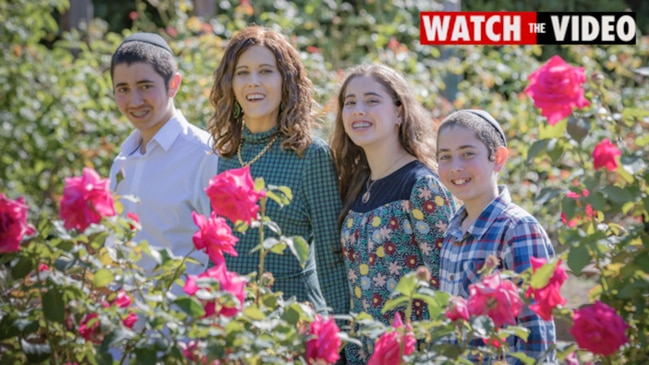
Victoria
Don't miss out on the headlines from Victoria. Followed categories will be added to My News.
Wherever Tamar Rosenthal looks there is love.
Across the garden her three children are playing with friends.
Soon she is in the kitchen where her best friend, Sara, is serving dinner, though Tamar turns to watch her kids in the dining room.
Over dinner her nearest and dearest swap stories and prayers as they offer her food, just as they do every evening.
For some reason Tamar’s eldest son, Yehuda Ber, keeps standing awkwardly close behind her — as though he just wants his mum to turn around so he can enjoy her attention all on his own — and Tamar laughs with joy.
Tamar’s heart, mind and soul couldn’t be in a happier place anywhere on earth — even though her body remains in an entirely different, and darker, place.
“It was really, really special. Absolutely incredible to be able to see the children close and to have them all literally surrounding me,” she tells the Sunday Herald Sun.
“Reconnecting at that point really did help.”
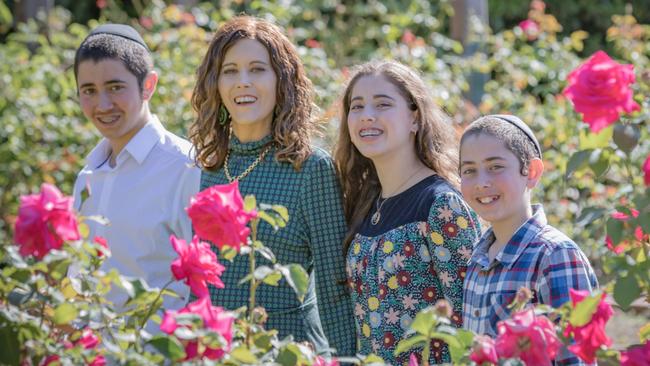
In September last year, Tamar suddenly began suffering excruciating pain.
The 39-year-old single mother, raising children Yehuda Ber, Yudis and Tzvi Dovid with loving support from Melbourne’s orthodox Jewish community, was taken to St Vincent’s Hospital’s emergency department on September 12.
Her children went to stay with her best friend, Sara Rosenfeld, and family.
Doctors soon discovered why Tamar had suddenly become so ill, but the news was so unexpected and horrifying it took weeks for the reality to sink in.
Cholangiocarcinoma, a rare and aggressive bile duct cancer, had spread throughout her body and the doctor’s prognosis was grim.
“Right from the beginning, it was already really bad and very, very advanced,” Tamar told the Sunday Herald Sun from her bed.
“It was at a very advanced stage and it had already spread, so it was a really big surprise to me. I have three children, I am a single mother so they are all in my care …”
After six days, Tamar left hospital, but first spoke to a therapist for guidance on how to break the worst news to her children.
Rather than returning to their Caulfield home, Tamar moved into Sara’s house so friends could care for her while her children made a heartbreaking transition.
“When I sat down to tell them the news, it was really hard for them to hear.
“Each of them had a different reaction.
“There is nothing you can say that is going to make them feel better. And, even if it does, the facts are still there.”
While their faith provided the family with strength and hopes of a miracle, Tamar also feared the grim reality of her situation could damage her children’s relationship with God if their prayers were not answered.
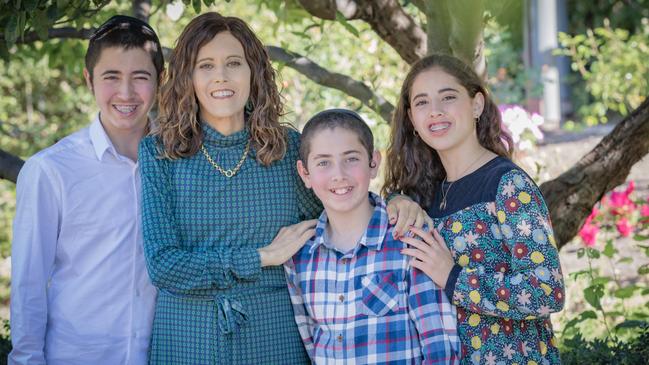
By the end of October, Tamar’s pain had become so extreme it could no longer be managed with medication at home, so she had to return to St Vincent’s — this time for palliative care.
In the middle of Melbourne’s second coronavirus wave, lockdowns meant Tamar was completely cut off from her family at a time they had never needed each other more.
While it was initially thought she would only need to stay in hospital for a fortnight, complications meant Tamar was still paralysed by pain a month later.
Although the physical agony was unbearable, the emotional toll was even worse. When Tamar caught an infection, doctors began telling her to ensure her will — and the care of the children — was organised.
Without knowing when or even if she would ever leave the hospital, not being able to see her children due to COVID lockdowns was heartbreaking.
“I just wanted them to be close, my three kids. And for them also, I knew how important it was for them to be close to me.
“They couldn’t see me, that was the hardest. They couldn’t actually see me and for kids that is so important, to just be able to touch and to know Mummy is here.
“For me, not being with them at night, not seeing them, not being at home, not being with them has been really, really hard.”
When Dr Justin Dwyer and the palliative care team approached Tamar to ask if she was interested in being the first person to try virtual reality as a way of connecting to her family at home, she was touched just to know how deeply people cared about how she was feeling.
Despite fears a virtual glimpse of her children may only make reality more difficult, Tamar was grateful for the chance.
Rather than any exciting adventure, she knew exactly what she wanted to be a part of: “Just doing whatever they would normally do at home, sitting around. That is definitely what I would like.”
Armed with a 3D camera — able to record a 360 degree view — Dr Dwyer and Dr Margaret Ross visited Sara’s house for a very ordinary, yet exceptional, Thursday night in.
The camera was connected to a tripod clad in Tamar’s clothes so that when she looked down it appeared she was really there.
The following day, in her palliative care room, Tamar put on a virtual reality headset and stepped back into her family’s home.
“I stood there and I could turn around to the kitchen and see them serving food. It was really amazing,” she said. “My oldest son was playing the piano which was really special.
“Then my youngest son was holding a baby and brought it to me.
“My eldest son kept walking behind me as though he just wanted me to keep looking at him.”
It was quickly realised the virtual reality was far more real than anyone at the hospital had imagined possible.
Fears the experience would prove distressing were also drowned out as Tamar’s laugh filled the room while she tried to cope with a son who insisted on standing behind her, forcing her attention to be in two places at once.
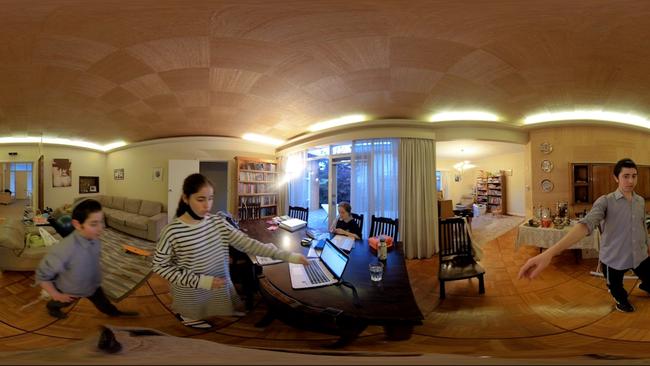
In this reality there was no need to split her attention — Tamar could relive the moment as many times as she liked, taking in as many angles as she chose.
Although everyone now realised just how powerful virtual reality could be, it was actually Tamar’s kids who decided to push further.
Increasingly comfortable with the camera and learning how to interact with it, as though it were their mother, the trio and their friends began to produce more experiences.
After recording a day in the garden, the children then produced a return to their Caulfield home.
“They kind of came into the home and said, ‘Hi Mummy, we’re home.’ Then they all sat around the table and they were saying, ‘I love you Mummy, too.’
“We sat down to play a game, then they asked me to sit on the couch with them and they moved the camera to be with them.
“I was smiling. The kids really cheered. It was funny.”
The experiences lifted Tamar more than any medication could.
She was equally as inspired to see the positive impact it had on her kids, handing them some control and the ability to do something profoundly special for her.
On December 8, seven weeks after arriving at hospital and being cut off from her family, Tamar was finally able to return home with a machine to provide around-the-clock pain relief.
“Everything was about trying to get home at that point.
“It was so heartwarming and very special. The kids could not believe it.
“It was very warm, very emotional and it touched me to be able to see them. Even if we don’t have that much to talk about, just having them around, being here …”
Now frail with cancer too advanced for treatment to help, Tamar remains at Sara’s home with her family, grateful for every moment she has with her family in both the real and virtual worlds.
“The future is in God’s hands,” she said.
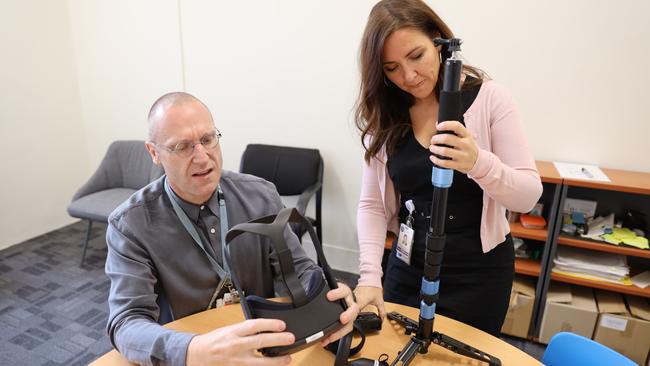
VR GIVING ILL PATIENTS THE ULTIMATE GIFT OF LOVE
Gravely ill hospital patients are being taken back to their homes and reconnecting with loved ones via virtual reality, with results more powerful and overwhelming than doctors thought possible.
Born out of desperation to connect distressed palliative care and cancer patients with their families during 2020s COVID-19 lockdown, the success of St Vincent’s Hospital’s world-first immersive project could now see it now rolled out across Australia and overseas.
With patients unable to see visitors even in their final weeks, doctors and film producers moved to equip families with cutting-edge 360-degree cameras so they could film their everyday lives and allow hospital-bound loved ones to join them in virtual reality.
While 3D movies have been used to distract or calm patients previously, St Vincent’s Dr Justin Dwyer said the impact of making a fully immersive experience of a person’s own life proved more profound than anyone imagined.
“We didn’t realise the enormity of it,” Dr Dwyer said.
“It is all about the experience of being back with your family in your home and included in all of it. There is a whole therapeutic intervention here. There is a whole brand new way of bringing back that sense of being included and dealing with that longing for home.”
The brainchild of Emmy Award-winning filmmaker Lynette Wallworth, the Immersive Presence Project allows hospital-bound patients to put on a virtual reality headset and enter whatever experience their family has filmed, complete with the ability to move or look in any direction.
Because the camera becomes the viewer’s virtual eyes, families are able to talk, move and interact with it in the same way they would with their loved one.
First used to help single mother Tamar Rosenthal reconnect with her three children during seven weeks of isolated palliative care, the experience has been enhanced, with doctors dressing the camera’s tripod in the viewer’s clothes to mimic the experience of being in their own body while wearing the viewing headset.
“It is an extremely powerful tool,” Ms Wallworth said. “It is not designed as a distraction, it is a gift from your loved ones to create this moment, imaging you back with them.
“It is about the things in your own life that bring healing, support and comfort just by being with them.”
After discussing the distressing scenes of isolated hospital wards with St Vincent’s Dr Margaret Ross in April, Ms Wallworth gained support to fund equipment for a pilot virtual reality project from Maureen Wheeler and Emily Adams and from Vasudhura.
With technical support from Melbourne company Phoria, Dr Ross and Dr Dwyer were finally able to offer the world-first opportunity amid the heartbreak of Melbourne’s second coronavirus wave.
With COVID-19 continuing to separate patients and families in other countries, St Vincent’s is passing on its experiences to other hospitals worldwide, though Dr Ross said it may become a tool used long after the pandemic has passed.
Some patients have even recorded their own experiences to be shared with their families after they pass away.
“Patients were scared and families were distressed at being apart,” Dr Ross said.
“All the things they tell us at their bedside they miss — they miss their garden … they want to sit in their favourite chair with their cat on their lap and their partner rattling away in the background.
“So many people want to sit at their favourite cafe or to sit at the beach hearing the waves.
“These are the moments people were aching for.”




